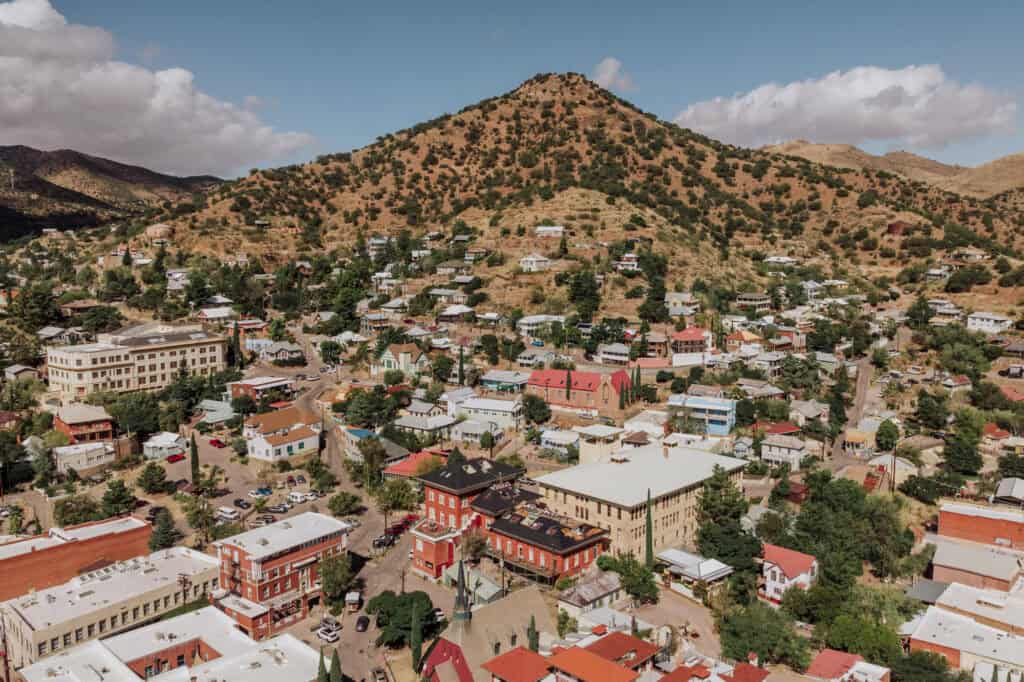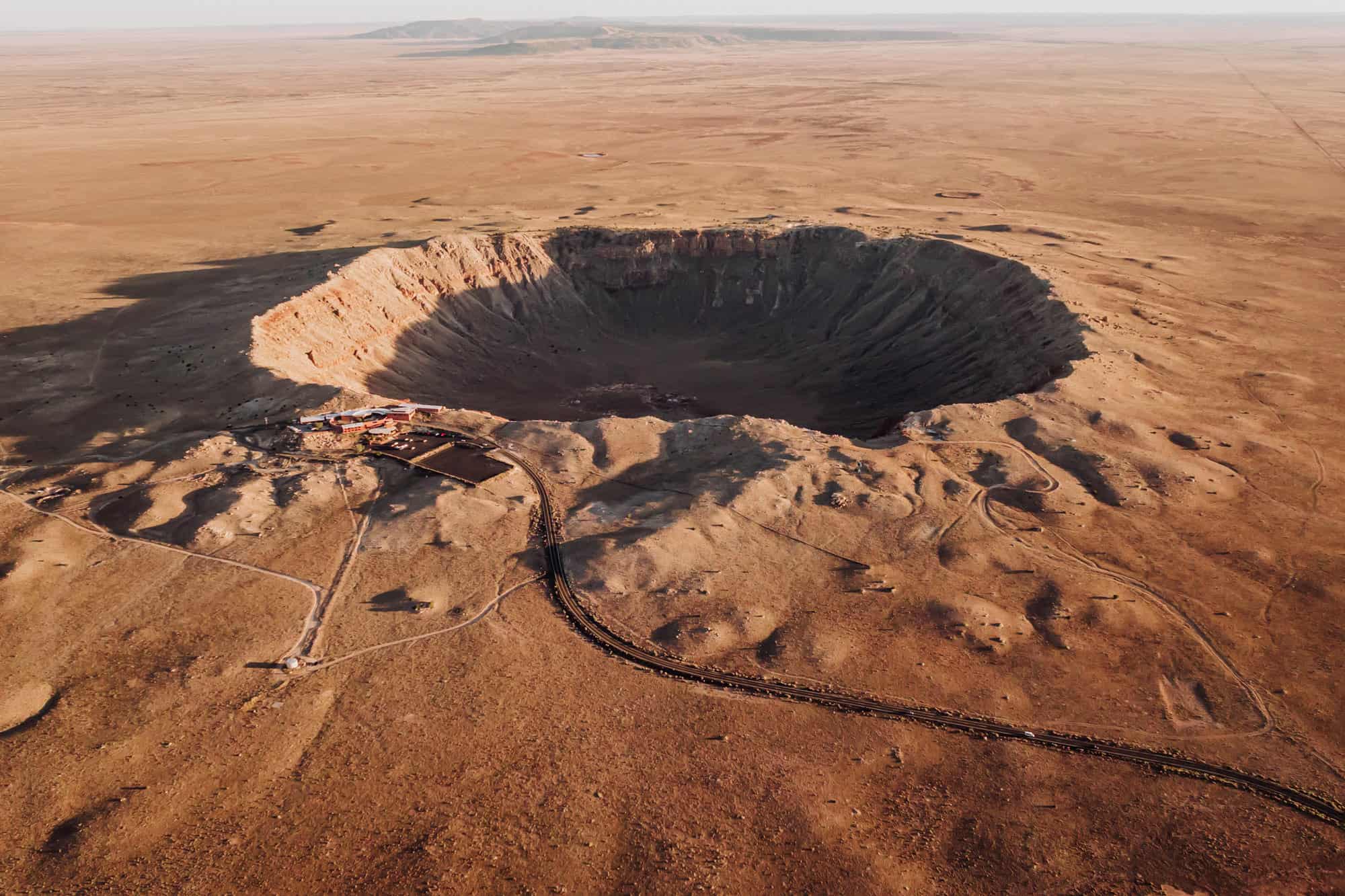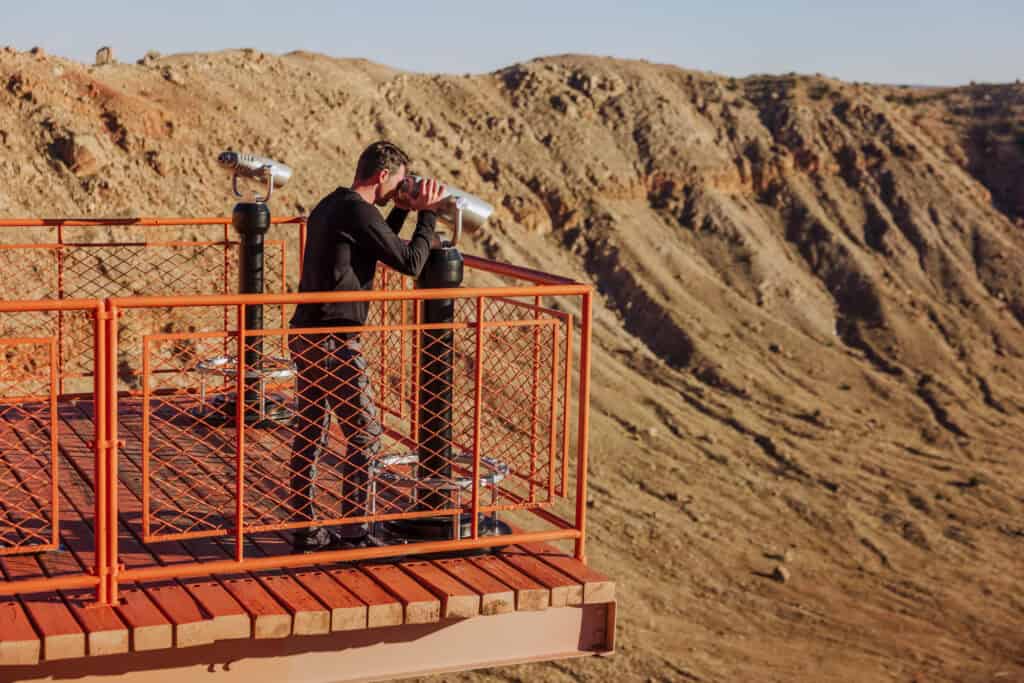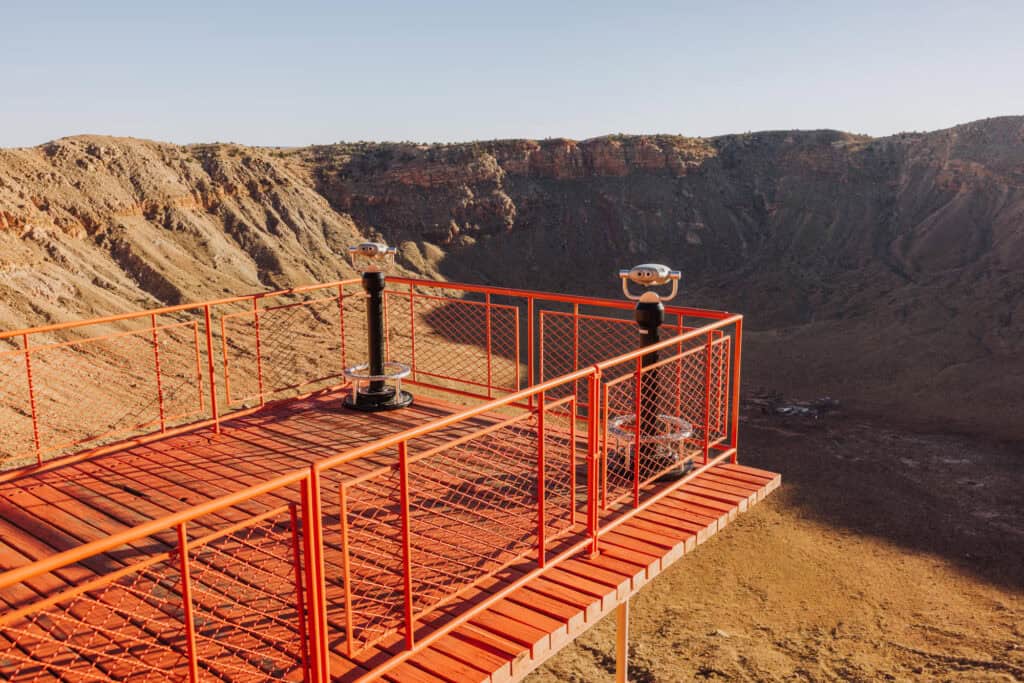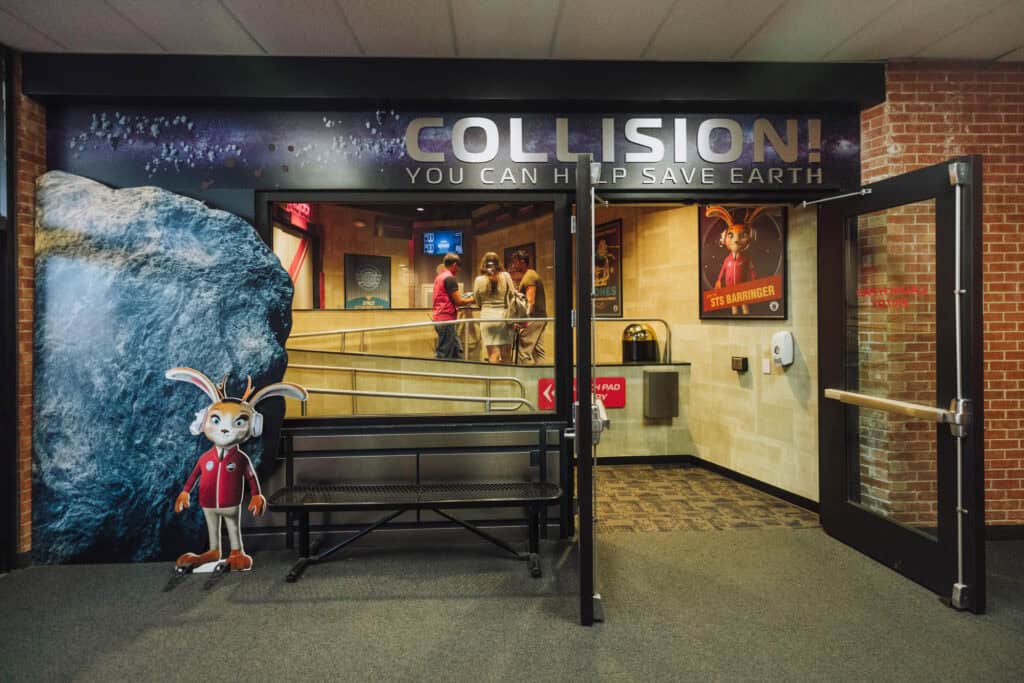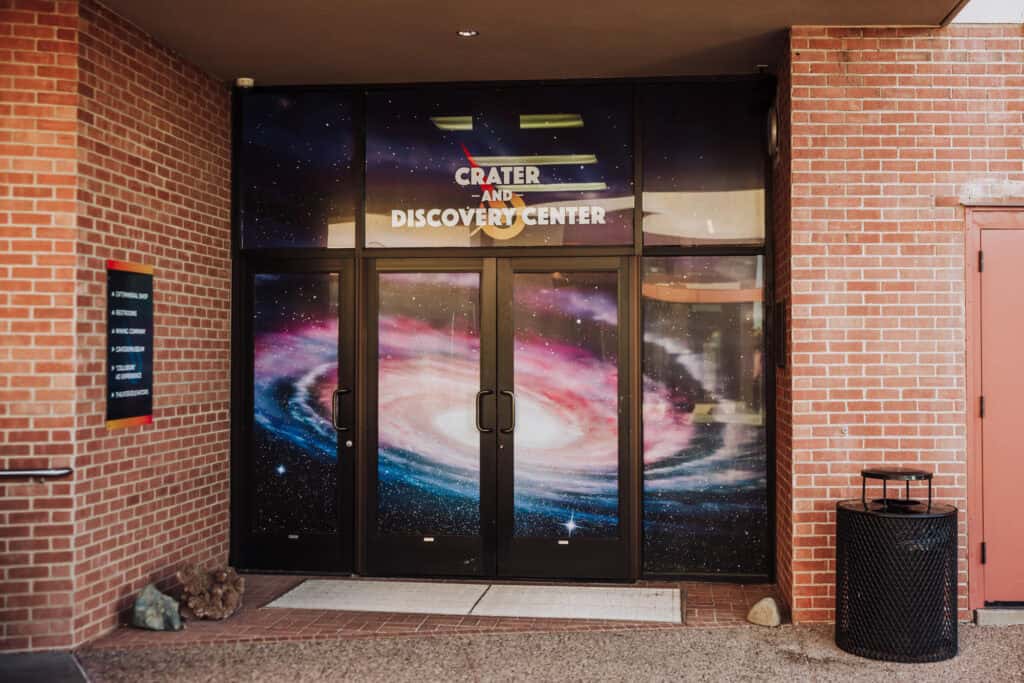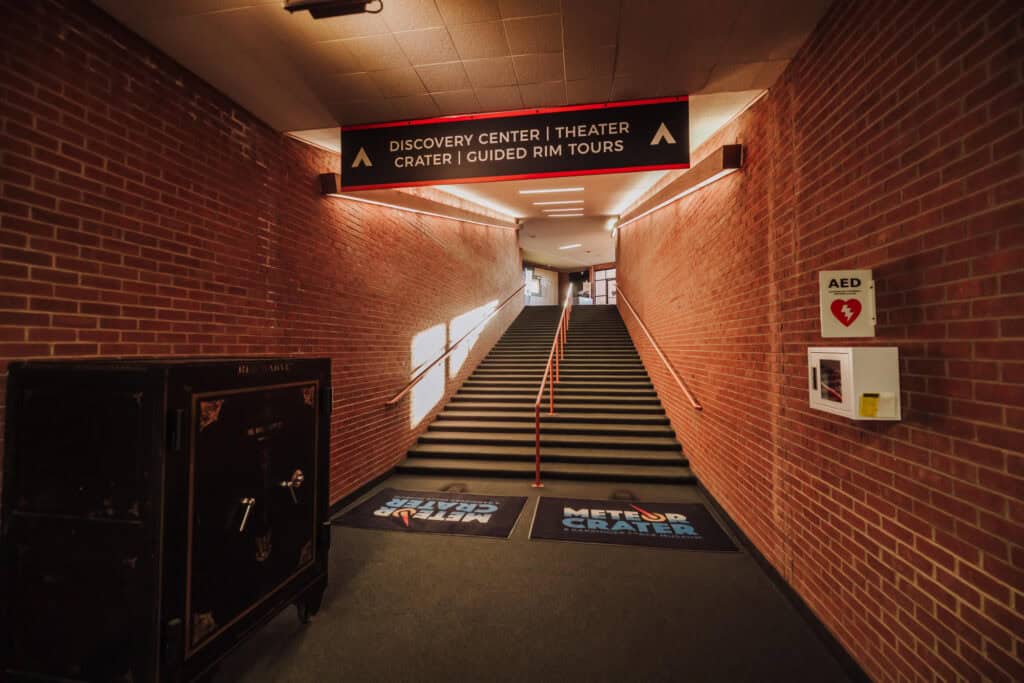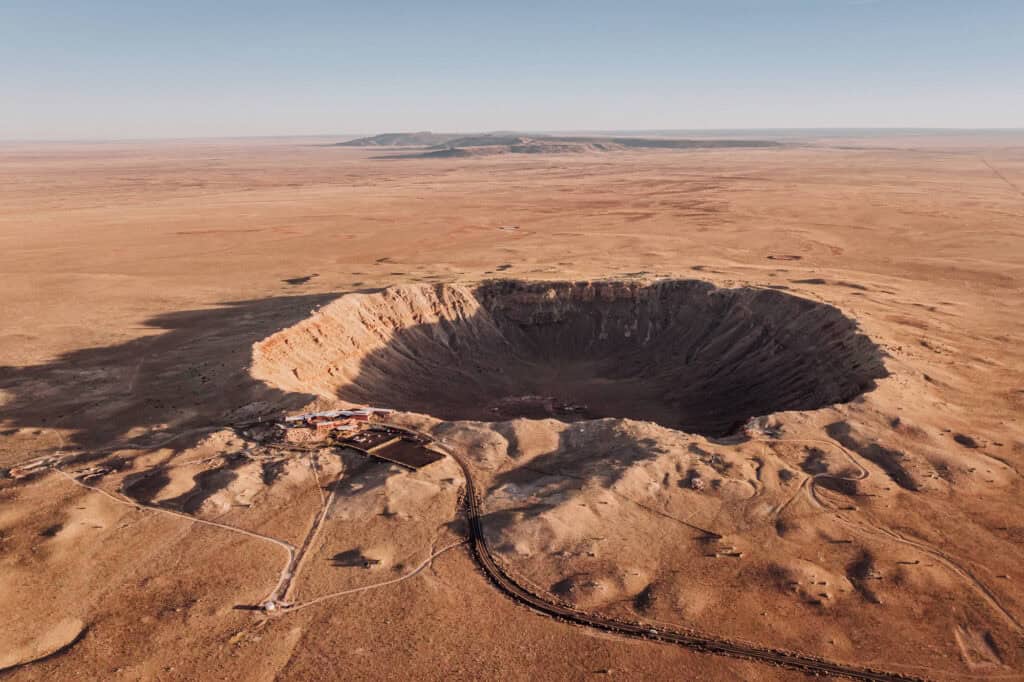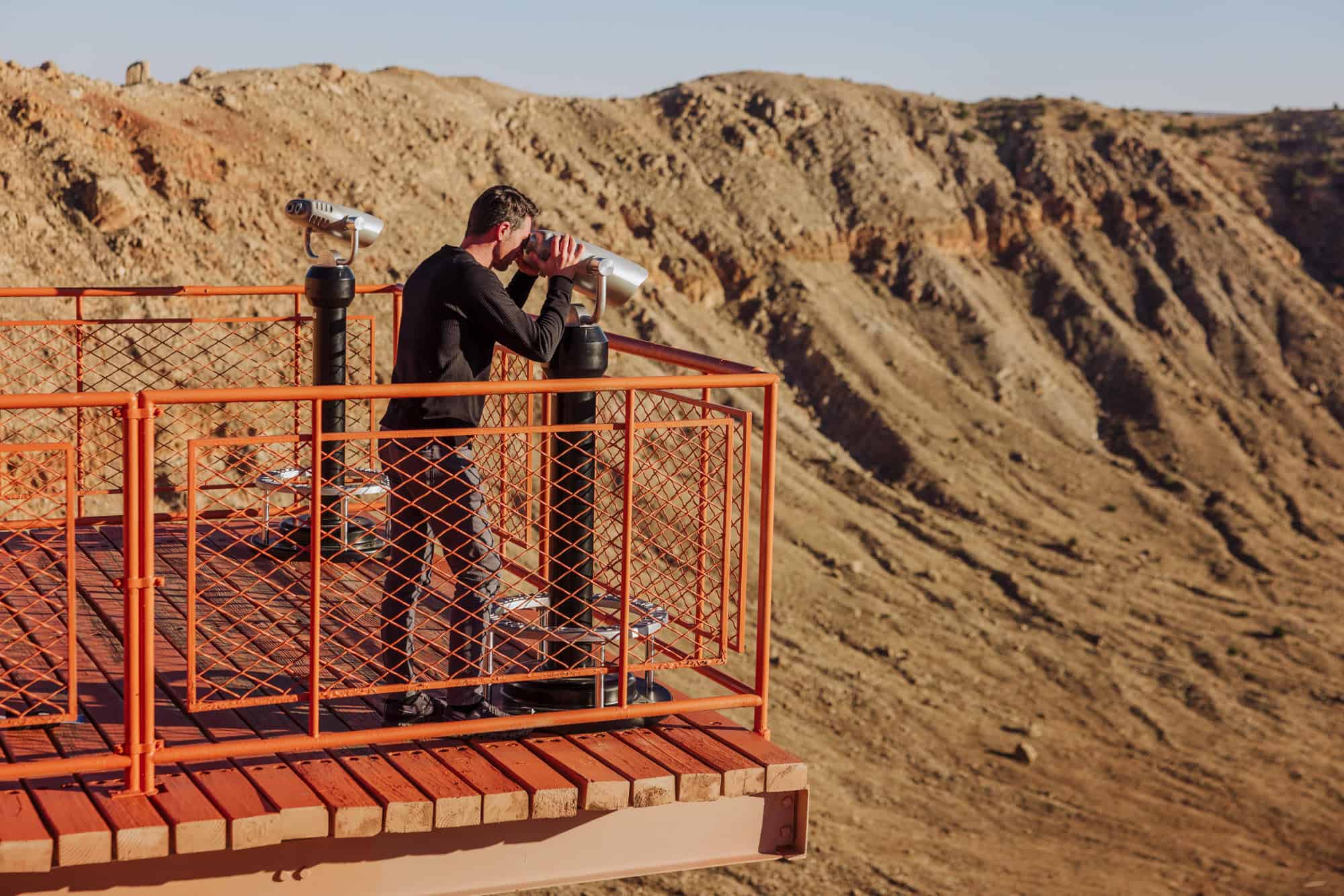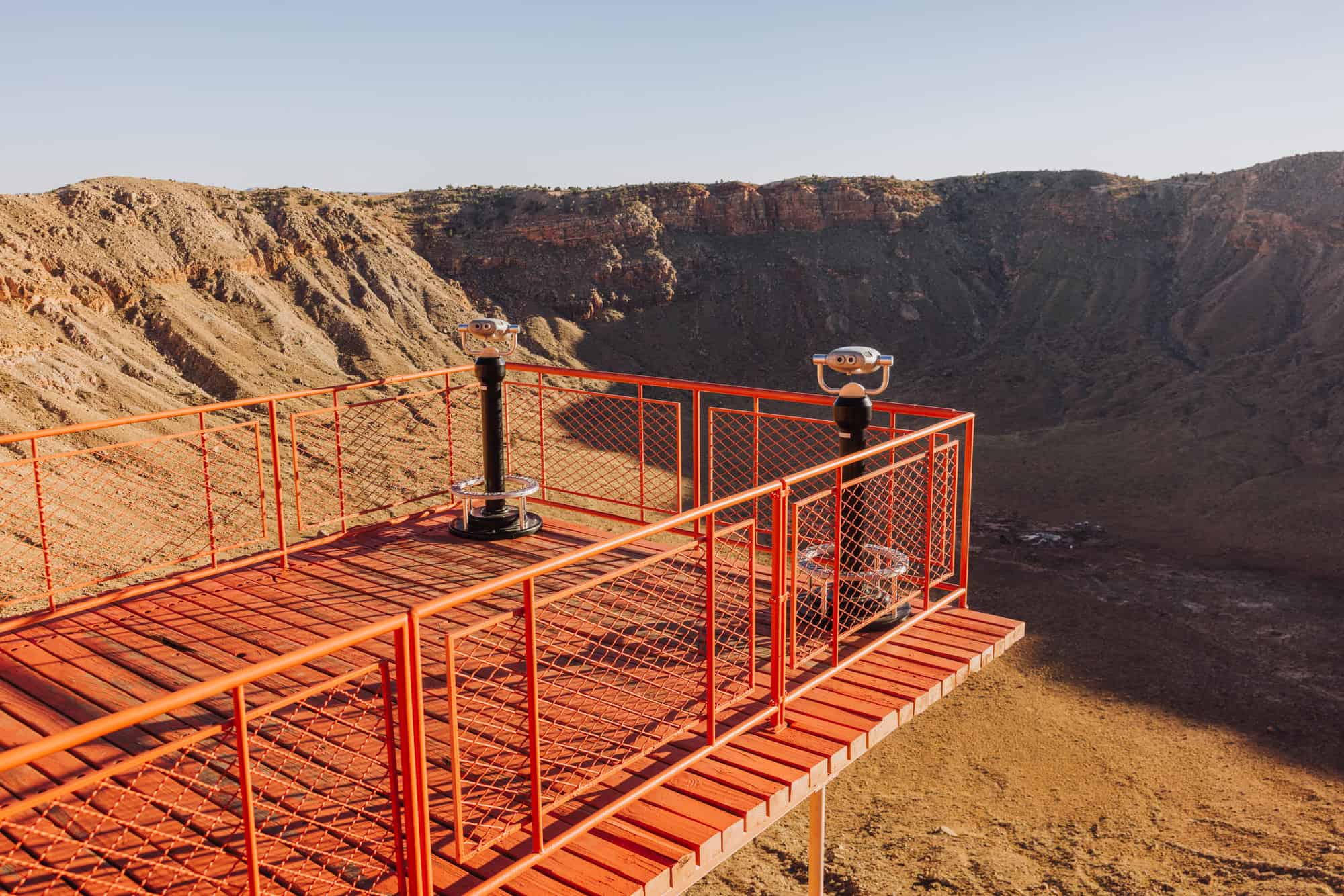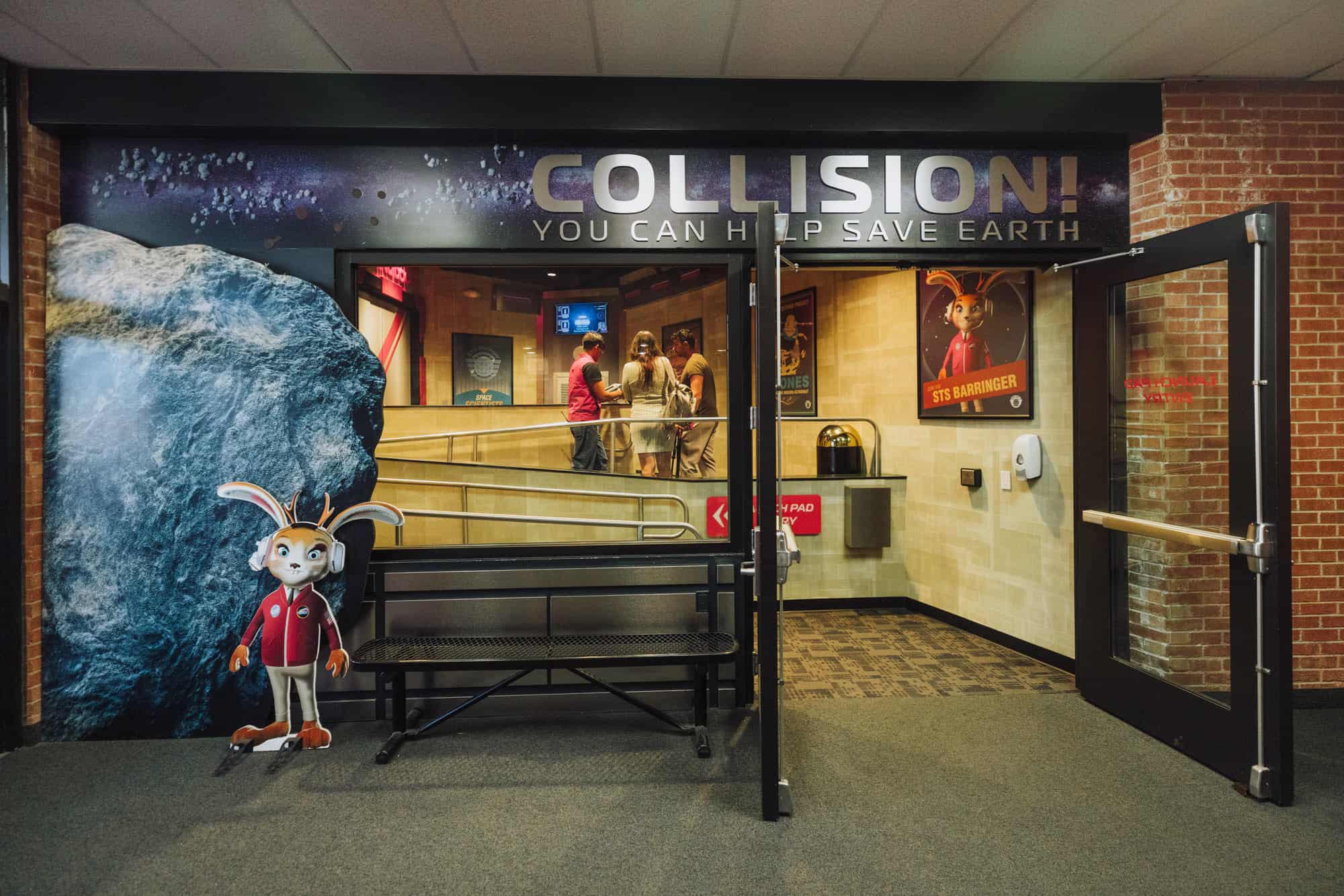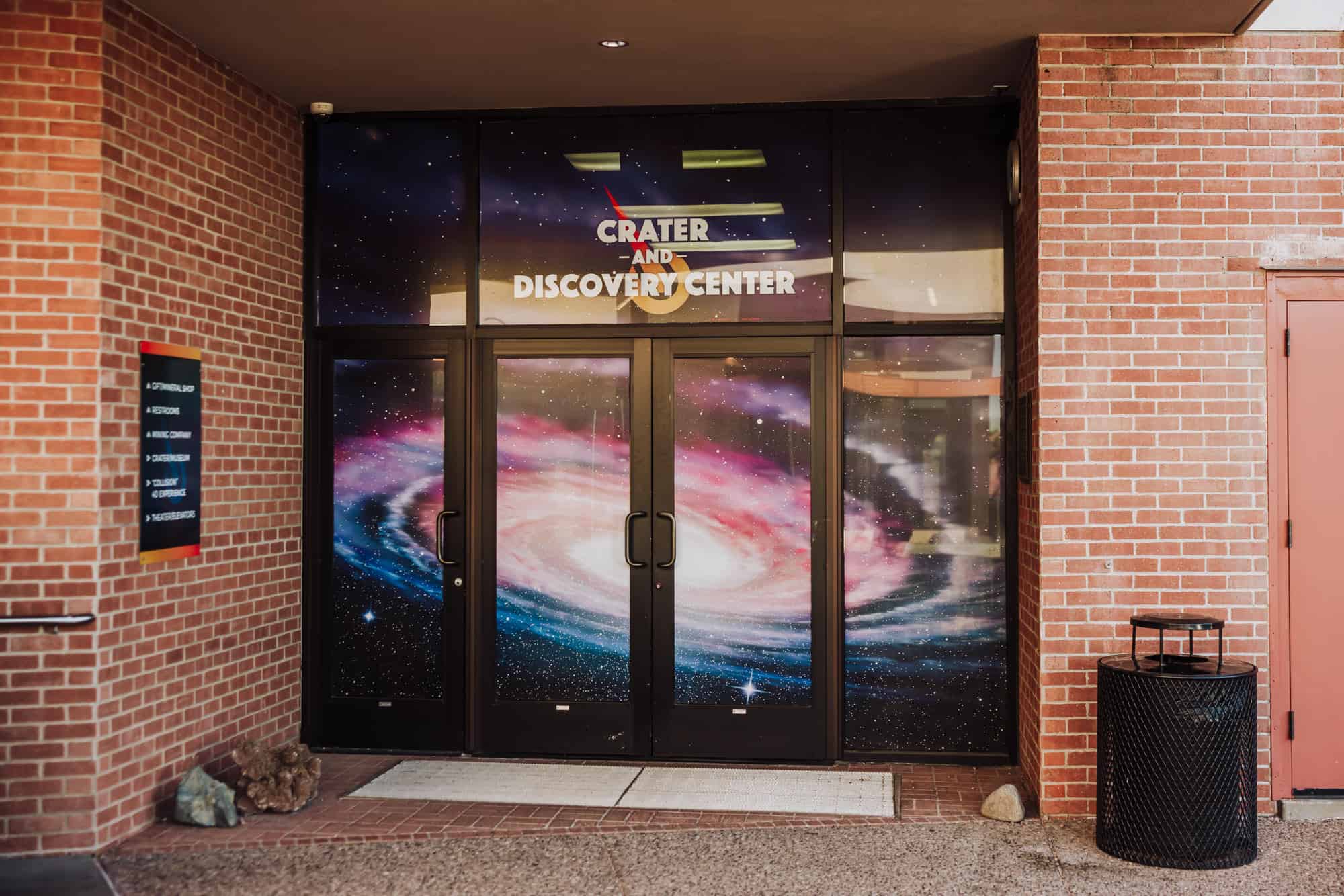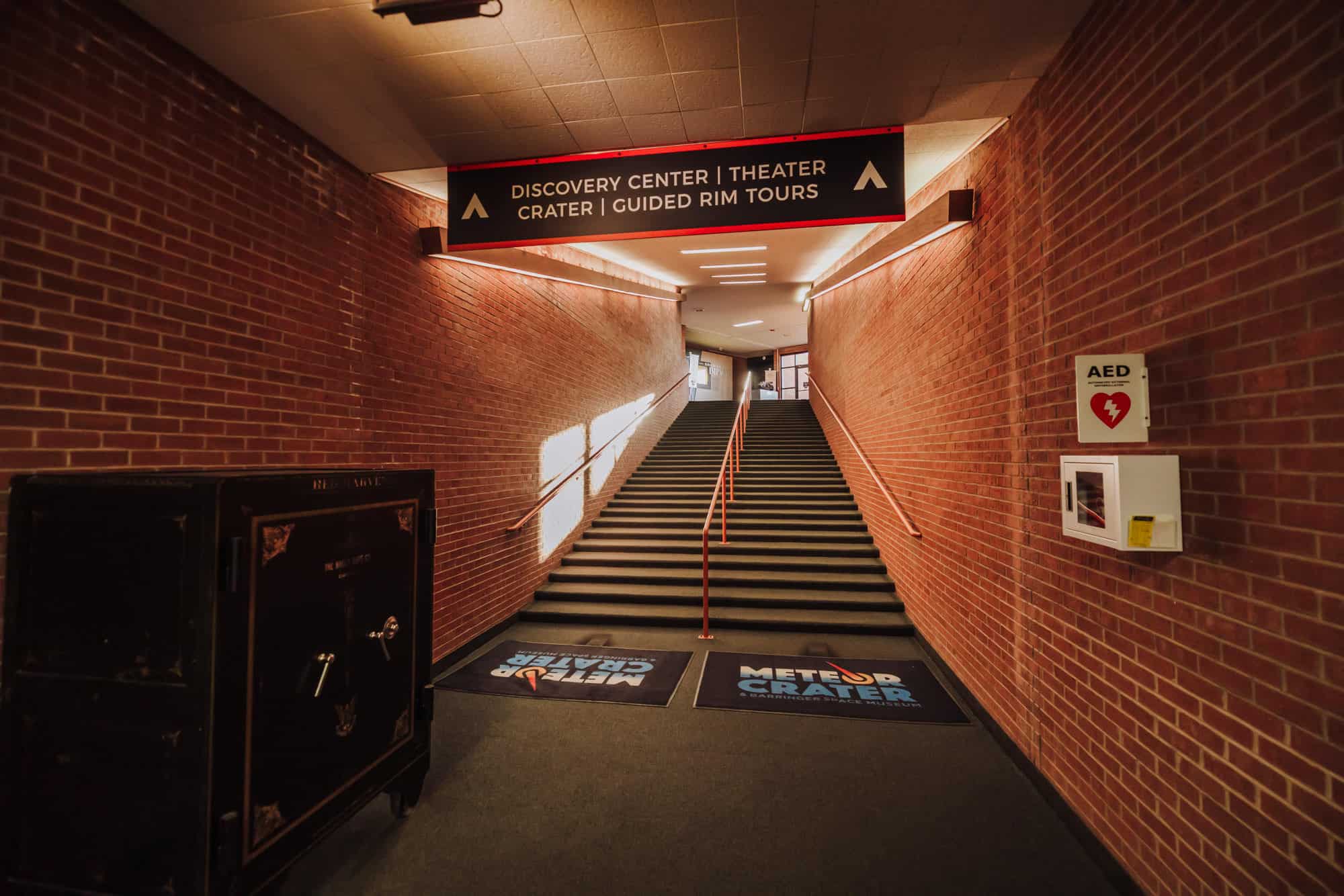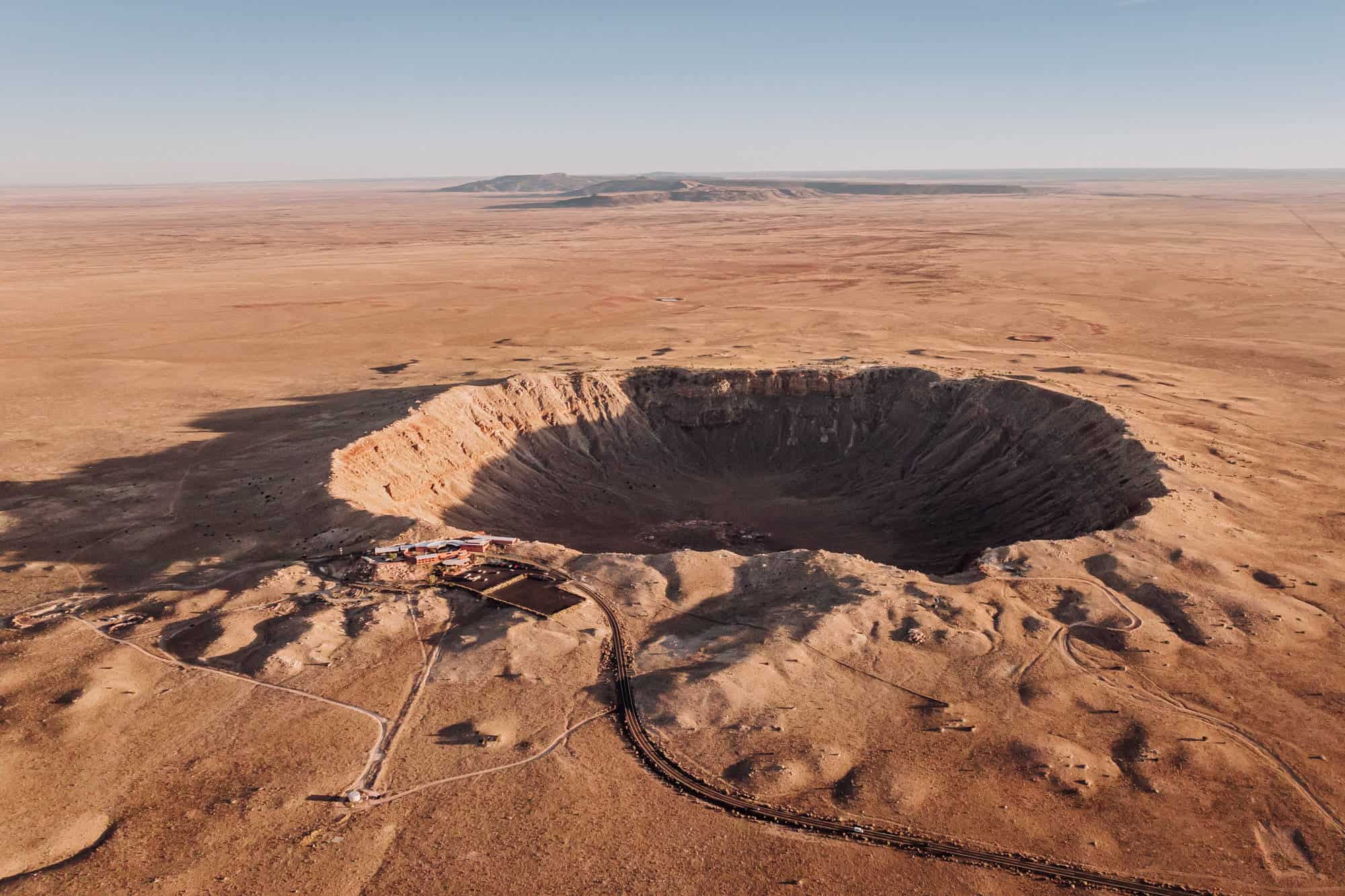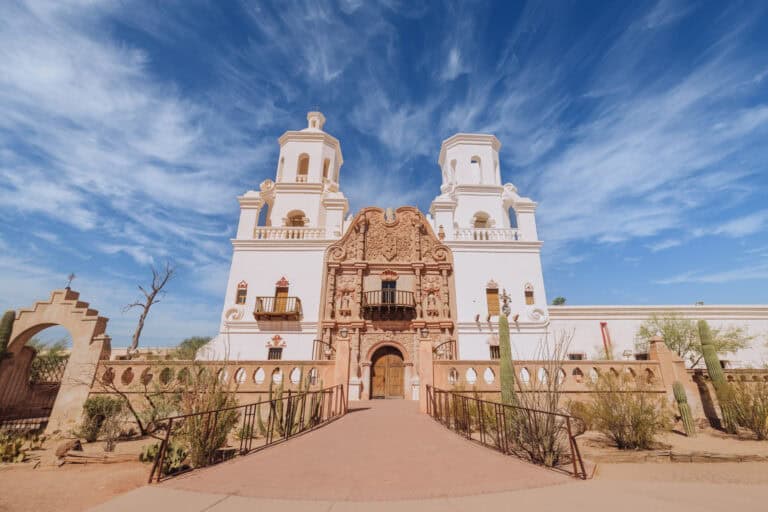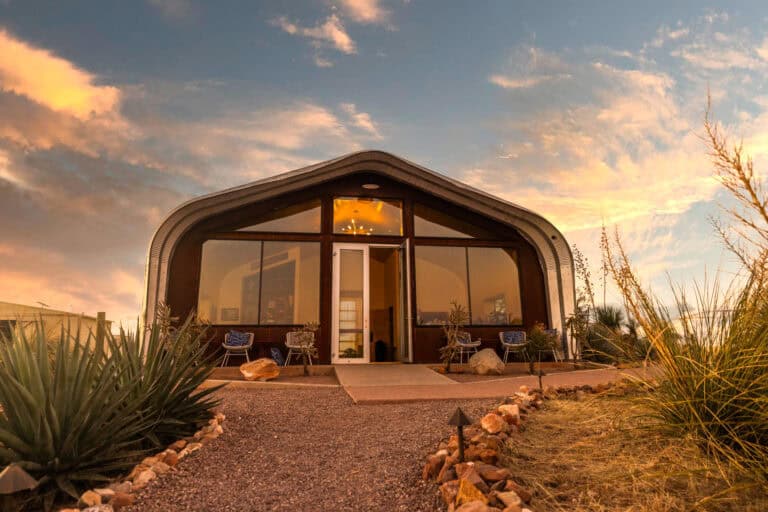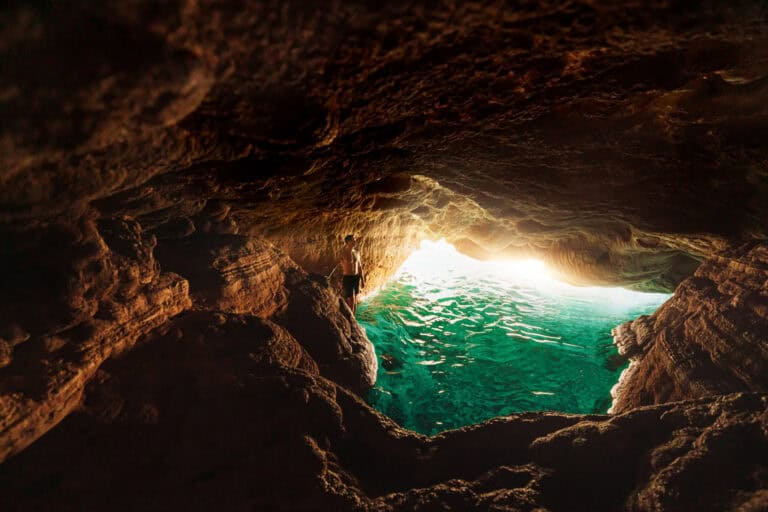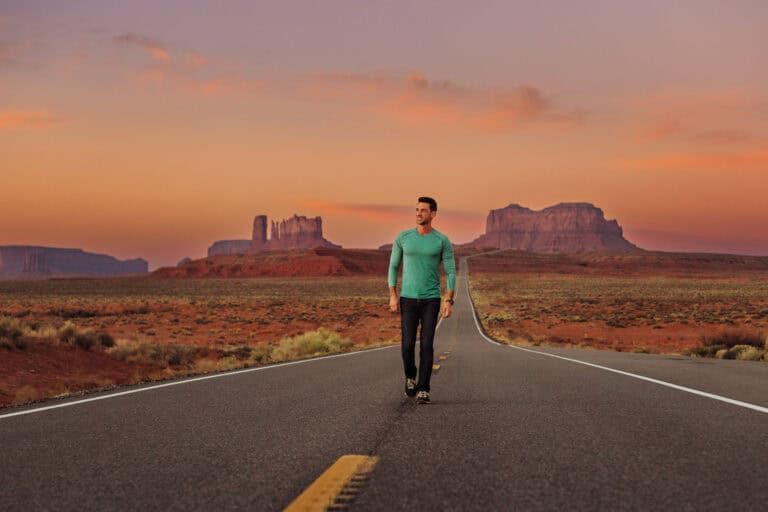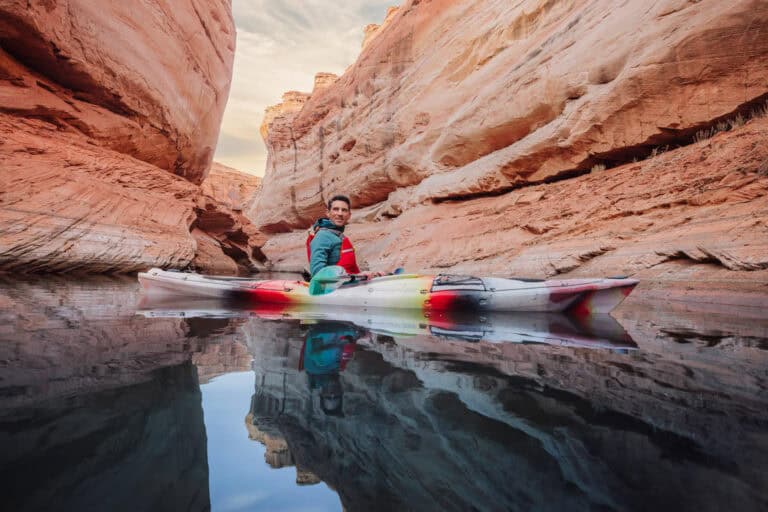Visit Meteor Crater in Arizona: From Impact to NASA’s Research On Site

Meteor Crater, also known as Barringer Crater, is one of the best-preserved meteorite impact sites on Earth. It’s open to the public to explore in Northern Arizona.
While you can’t walk down into the crater itself, you can hike a trail around part of the rim, and learn about the meteorite and the site’s role in NASA history at the museum on site.
Key Info
- Located in Northern Arizona, between Flagstaff and Winslow.
- Access is easy off Interstate 40.
- The cost is $29, with discounts for seniors, kids, veterans, and active duty.
- The meteorite hit 50,000 years ago.
- The Apollo Astronauts trained here.
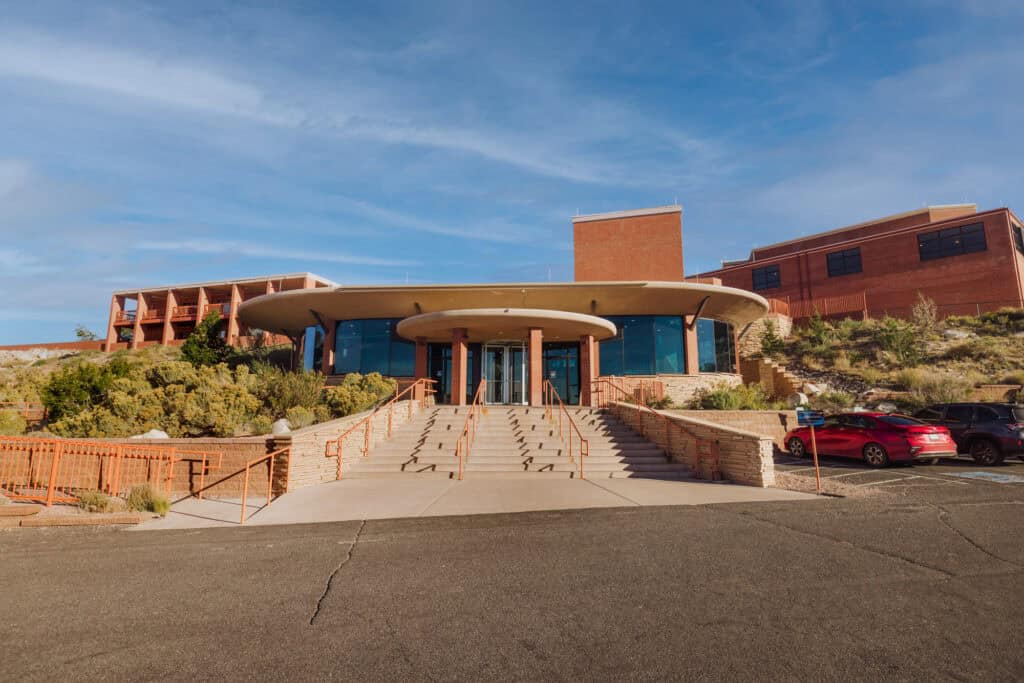
Hotels Near Meteor Crater
Meteor Crater is near Winslow, Arizona, about 35 miles east of Flagstaff and just off Interstate 40.
The impact site is an easy drive from Flagstaff. You can plug your dates into this interactive map, and it’ll bring up the best rates on Expedia, Hotels, VRBO, and other trusted sites
Phoenix to Meteor Crater Tour
If you’re in the Phoenix area, you can relax and hire a driver to take you on a day trip to both Meteor Crater and Walnut Canyon.
Visitor Hours and Entry Fees
Meteor Crater and the Barringer Space Museum are generally open daily from 7:00am to 7:0pm in the summer, and 8:00am to 5:00pm in the winter. Hours may vary, so check the official website before visiting.
The final movie showing is an hour before closing.
You can take the guided tour, or walk out to the site on your own.
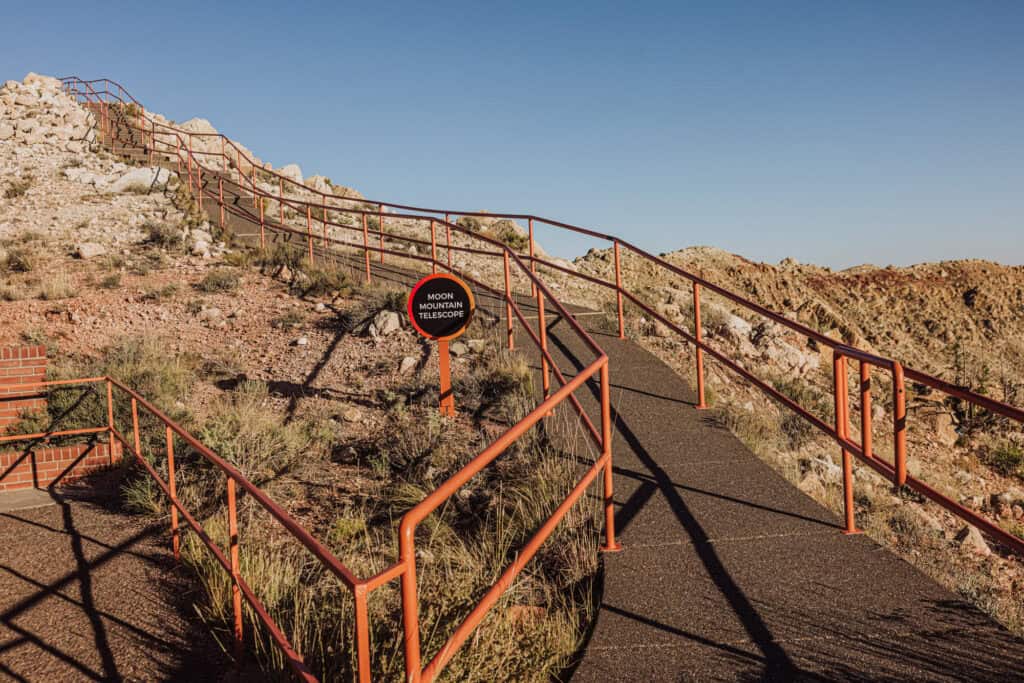
Admission Costs
Admission prices vary by age and group:
- Adults: $29 (includes the movie and guided tour)
- Seniors (60+): $27
- Children (6–12): $20
- Children under 5: Free
- Veterans with ID: $20
- Active Duty: Free
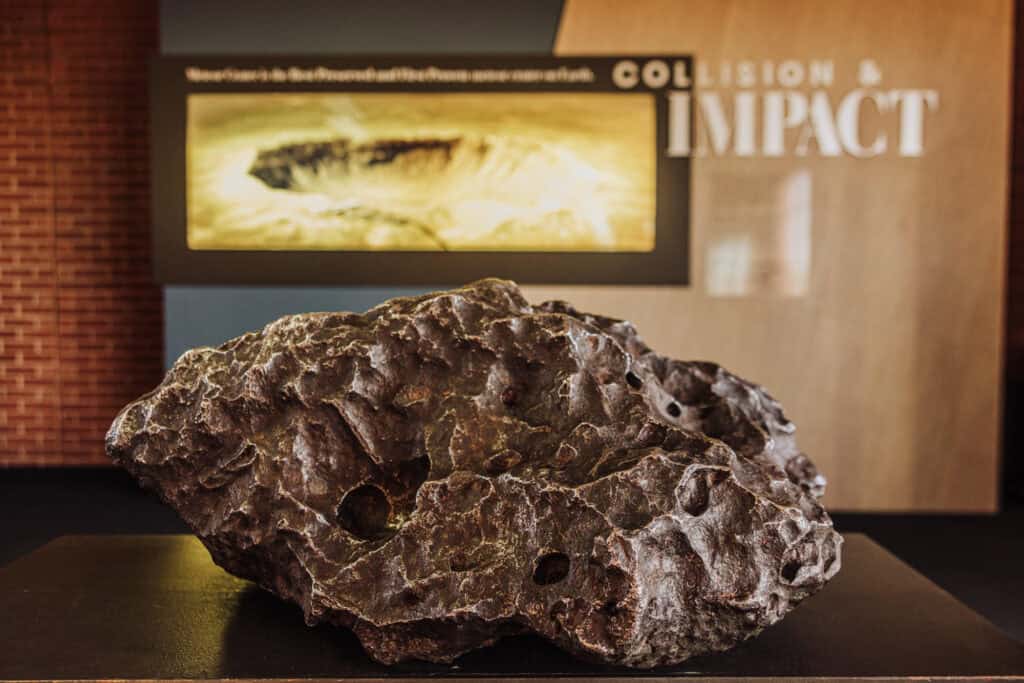
The Crater
Unlike other impact craters that have eroded over time, Meteor Crater is exceptionally well-preserved due to its young age (about 50,000 years) and the climate, which minimizes weathering.
Meteor Crater is accessible to all ages and abilities.
The Crater is:
- the size of 20 football fields.
- 2.5 miles around.
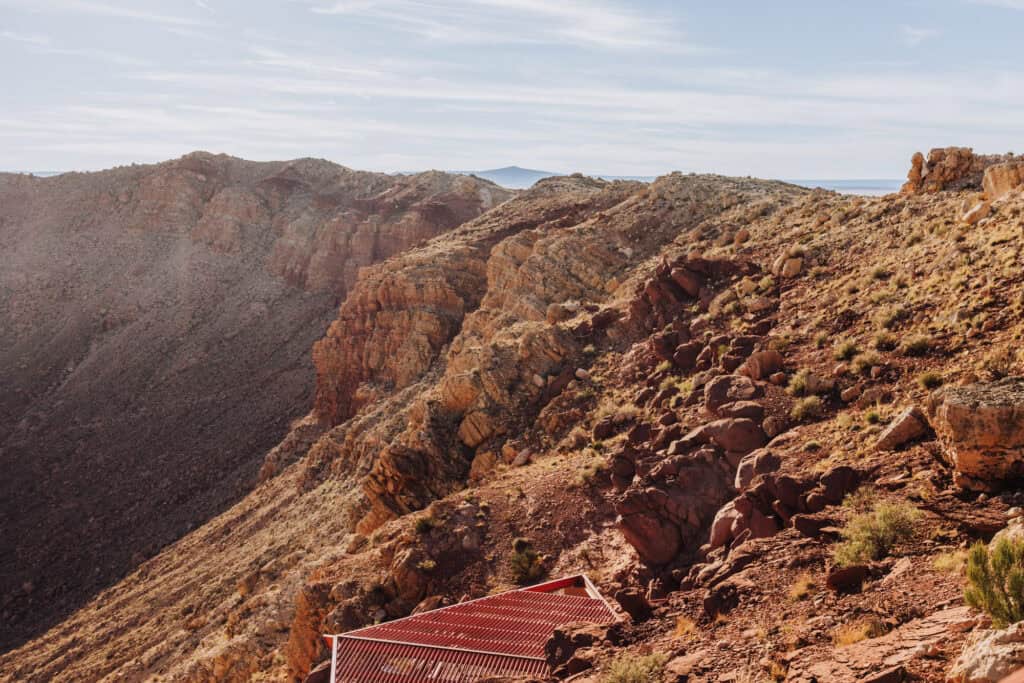
Evidence that a meteorite formed it:
- Shocked Quartz: Found only at impact sites and in nuclear test zones.
- High Nickel Content: Traces of the iron-nickel meteorite that caused the impact.
- Ejecta Blanket: Visible layers of material thrown out during the impact surround the crater.
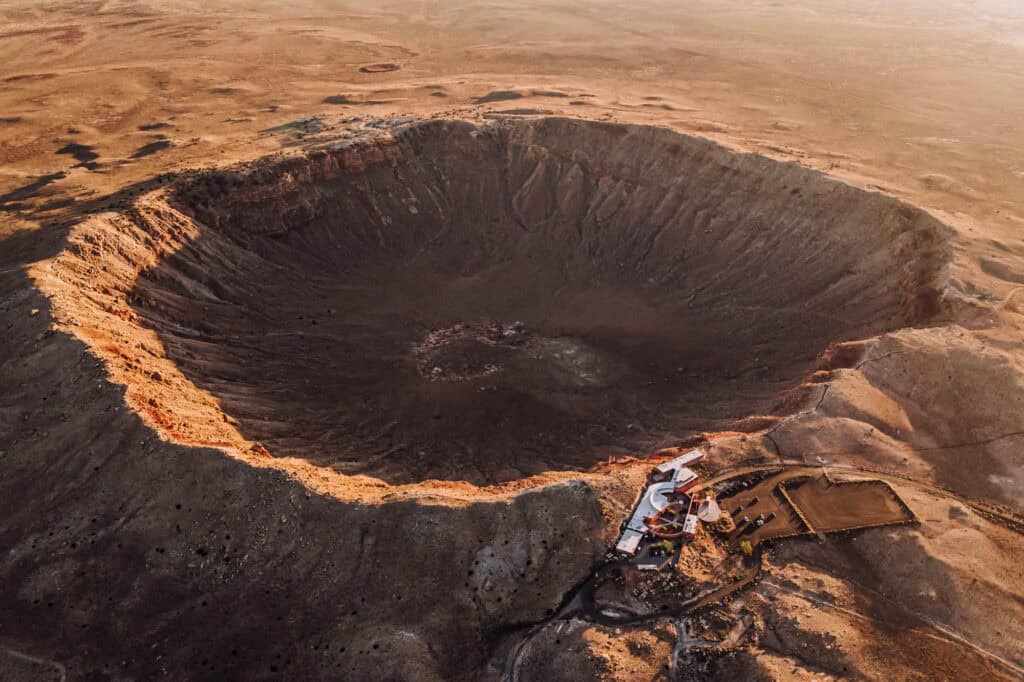
What to Expect at Meteor Crater
While you can’t walk down into the crater itself, there’s plenty to explore on a visit.
Walking Around the Crater
You’re free to walk on your own around part of the crater’s ledge. There’s a paved trail, which stretches about a quarter of a mile. It leads to several different viewpoints.
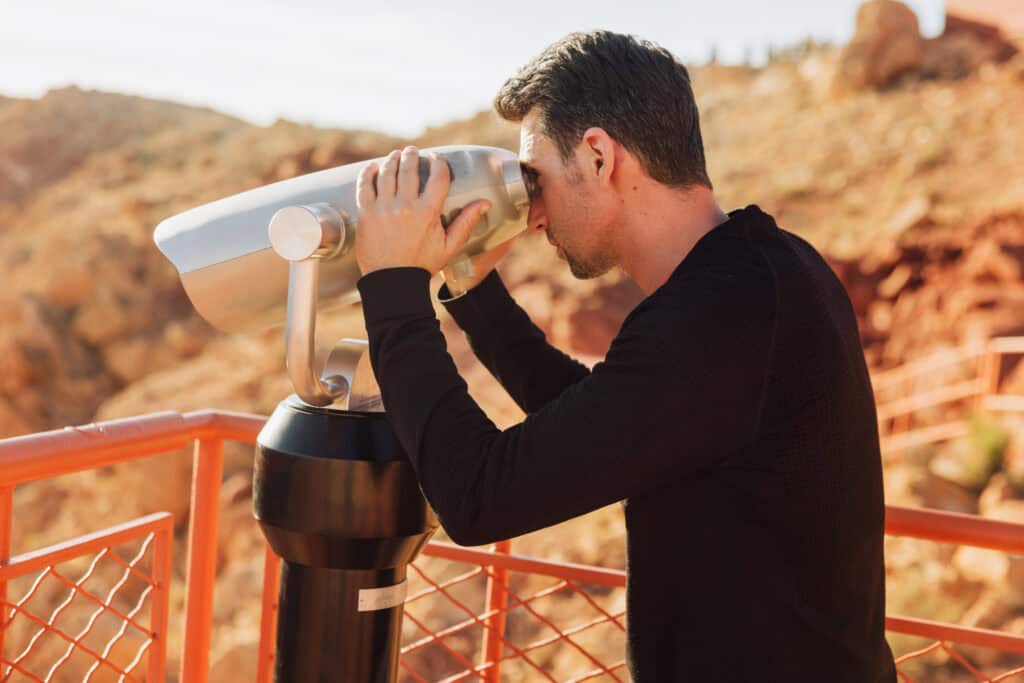
You can spot an old mine in the center of the crater, where scientists dug 200 feet down searching for fragments of the meteorite.
You’ll also be able to see evidence of the force of impact in the inverted layers of rock.
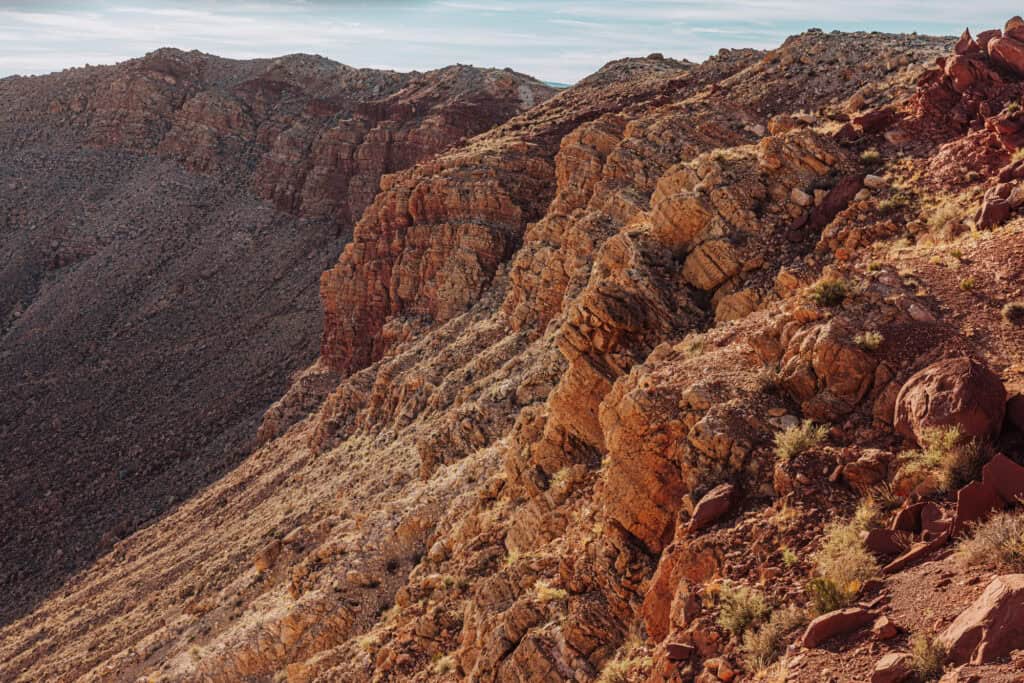
The Movie
Every 30 minutes, they run a brief film detailing the creation of Meteor Crater. It’s a great introduction before you head outside.
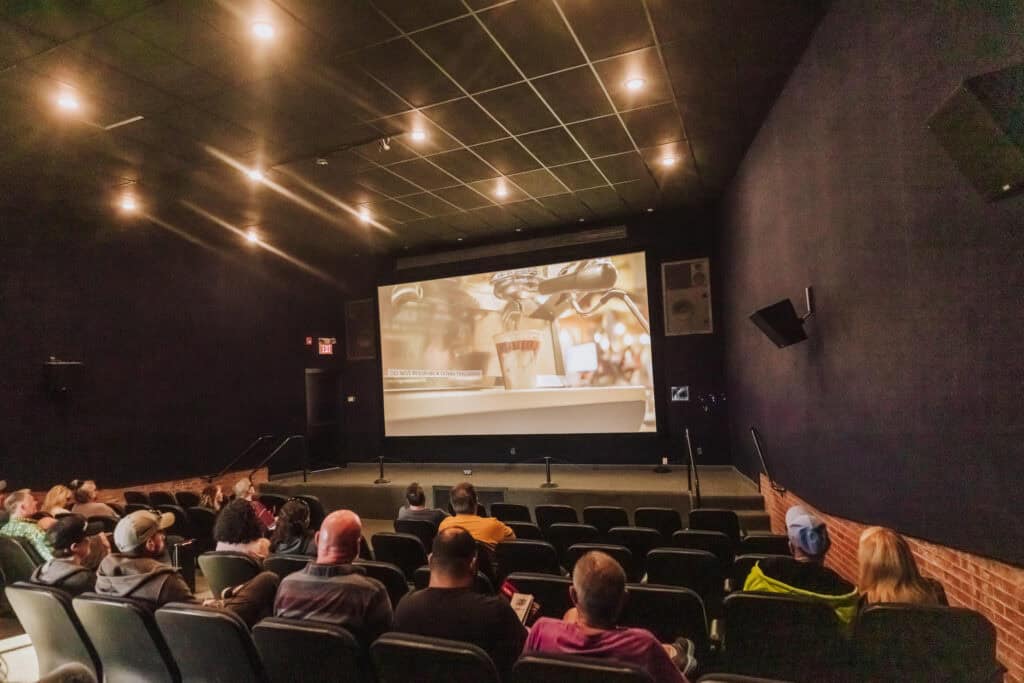
The Museum
There’s a fairly extensive museum and discovery center on-site, which dives deep into meteorites and their impacts around the world.
The exhibits also detail the discovery and founding of the site, plus its role in NASA research.
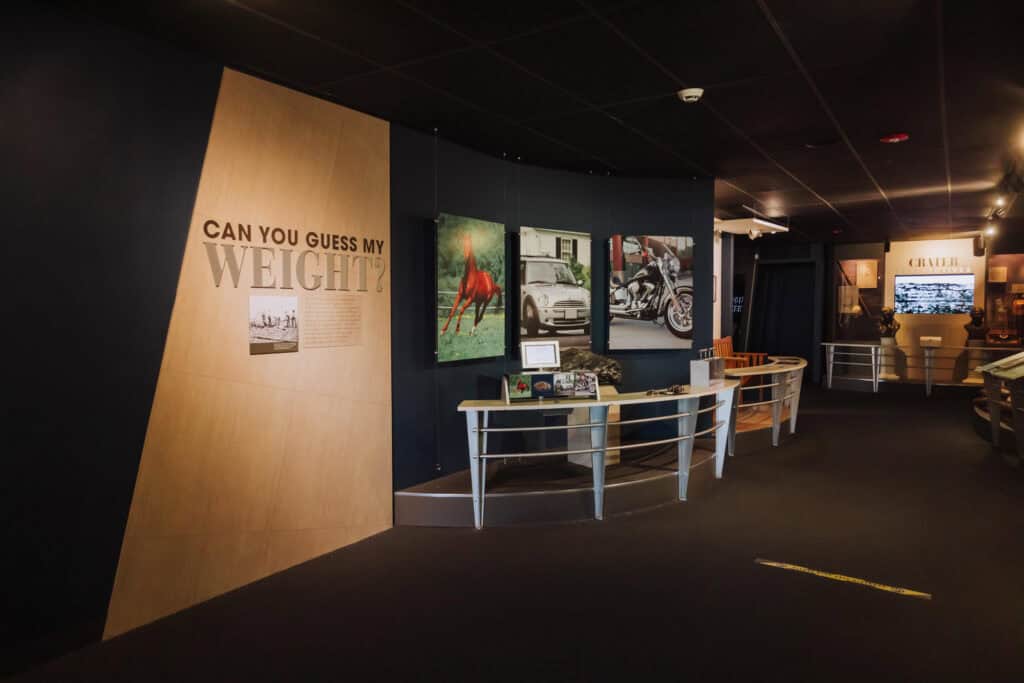
Food
Meteor Crater has a small cafe and coffee house, with a mining theme.
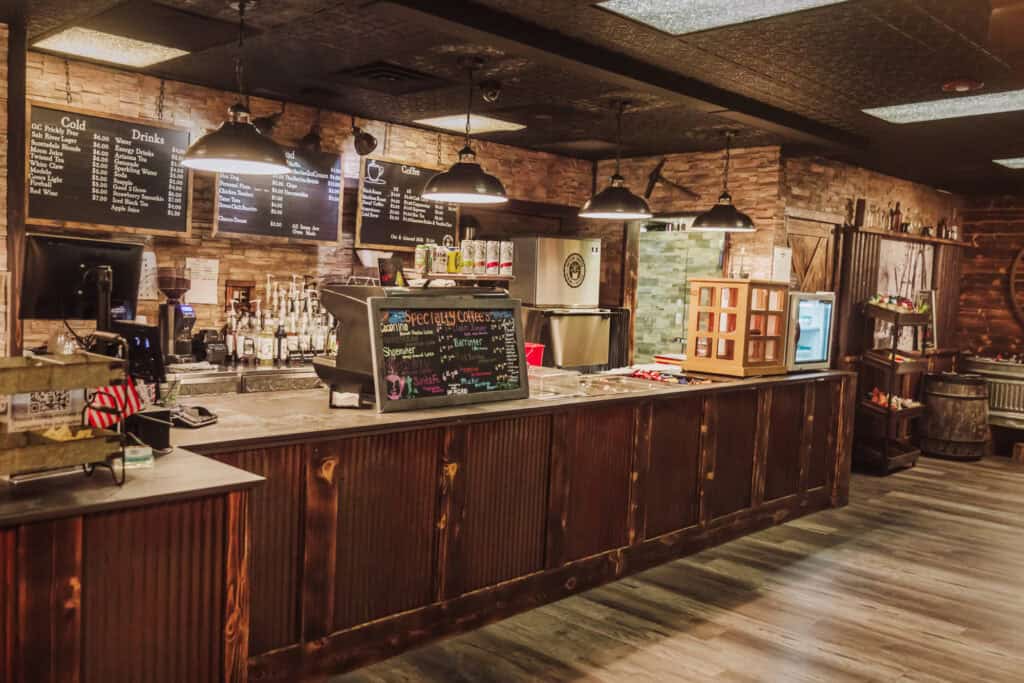
The Meteor’s Impact & Discovery
The history of Meteor Crater dates back 50,000 years.
Meteorite Hits Earth
- Impact: During the Pleistocene Epoch, a nickel-iron meteorite struck the Earth.
- Speed: It impacted the planet at a speed of about 26,000–34,000 mph.
- Meteorite Size: It’s estimated to be approximately 160 feet in diameter
- Crater Size: The resulting impact created a crater roughly 3,900 feet in diameter and 560 feet deep. The rim rises about 150 feet above the surrounding plain.
- Blast Force: The explosion was equivalent to about 10 megatons of TNT.
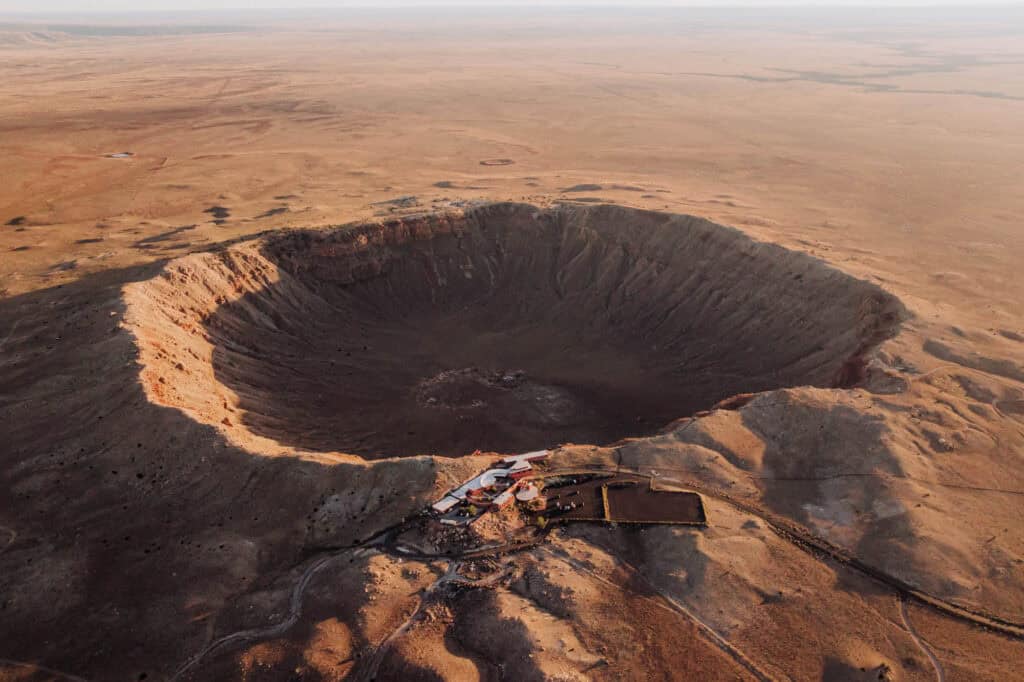
Discovery and Scientific Exploration
Local Native American tribes were likely aware of the crater long before Europeans arrived but did not document its origins.
The crater gained attention in the late 19th century when settlers and explorers came across it.
Daniel Barringer (1903)
Mining engineer Daniel Barringer hypothesized that the crater was formed by a meteorite impact, rather than an ancient volcano.
He acquired the land to mine for what he believed was a massive deposit of iron-nickel. Large quantities of the meteorite were never found, but his theory was later validated by the presence of high-pressure minerals like shocked quartz, which are only formed during massive impacts.
Best Time to Visit Meteor Crater
There are a couple of things to be aware of weather-wise.
During the summer, all of Arizona is impacted by monsoon storms. They typically hit from July through September, and can be unpredictable. It’s not a reason *not* to visit in late summer, but rather something to keep in mind.
In the winter, this part of Northern Arizona sees quite a bit of snowfall. Depending on the storm, it can close the I-40, which is notorious for high winds and whiteouts during snowfall.
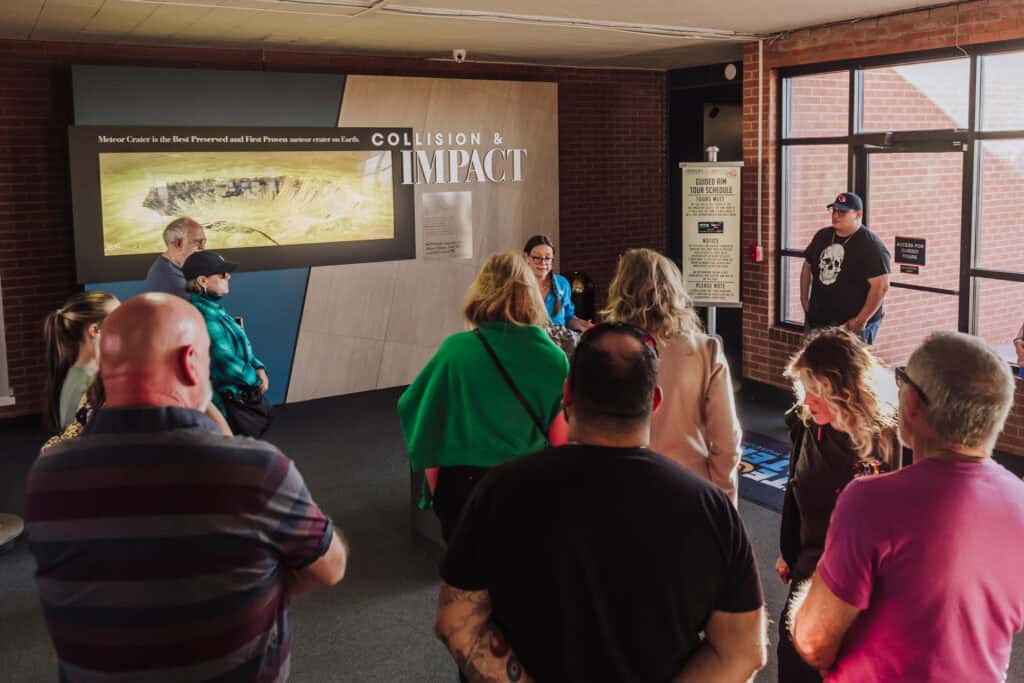
Average Temperatures
Here’s what you can expect temperature-wise, if you’re flexible and looking for the best season to visit Meteor Crater.
- January: High 47°F, Low 19°F
- February: High 51°F, Low 22°F
- March: High 57°F, Low 26°F
- April: High 65°F, Low 32°F
- May: High 74°F, Low 40°F
- June: High 84°F, Low 49°F
- July: High 87°F, Low 55°F
- August: High 84°F, Low 54°F
- September: High 78°F, Low 47°F
- October: High 67°F, Low 36°F
- November: High 57°F, Low 26°F
- December: High 47°F, Low 19°F
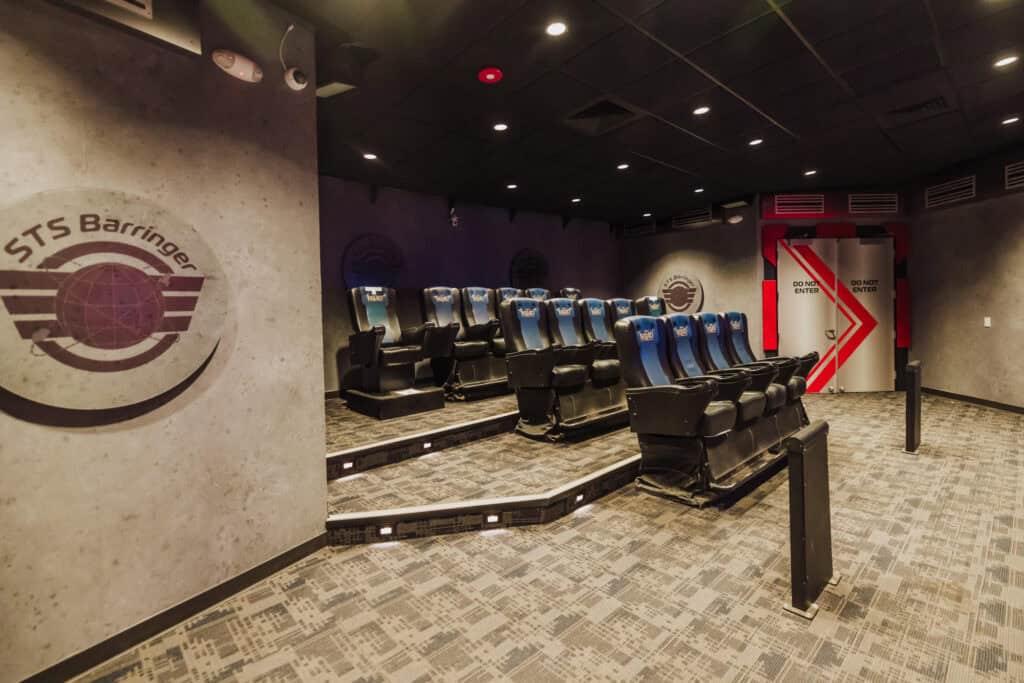
NASA Astronaut Research on Site
Meteor Crater, with its lunar-like terrain and geological significance, played a role in NASA astronaut training during the Apollo program.
Apollo Training Site (1960s – 1970s)
The crater’s resemblance to lunar craters made it an ideal location for preparing astronauts to identify and analyze geological features they would encounter on the Moon.
Astronauts trained in collecting rock samples from the site, and worked with geologists to learn how to study lunar geology during the missions.
The crater allowed astronauts to practice traversing rugged terrains similar to those they’d find on the moon.
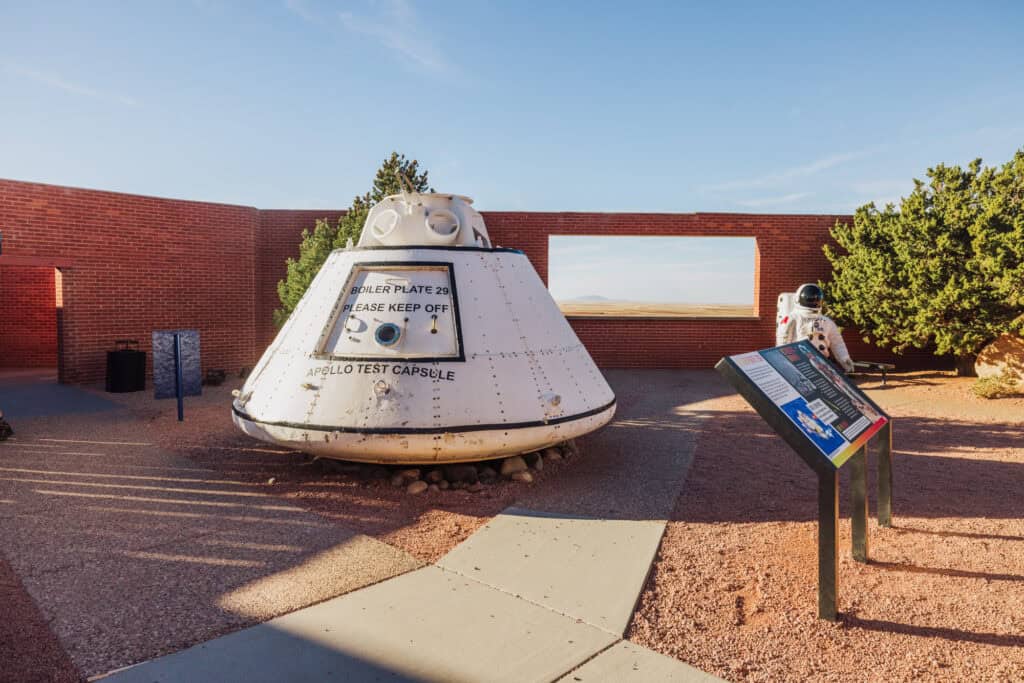
Notable Astronauts
Astronauts from several Apollo missions, including Apollo 11’s Neil Armstrong and Buzz Aldrin, participated in field training exercises at Meteor Crater.
The museum on site is full of mementos from their time here.
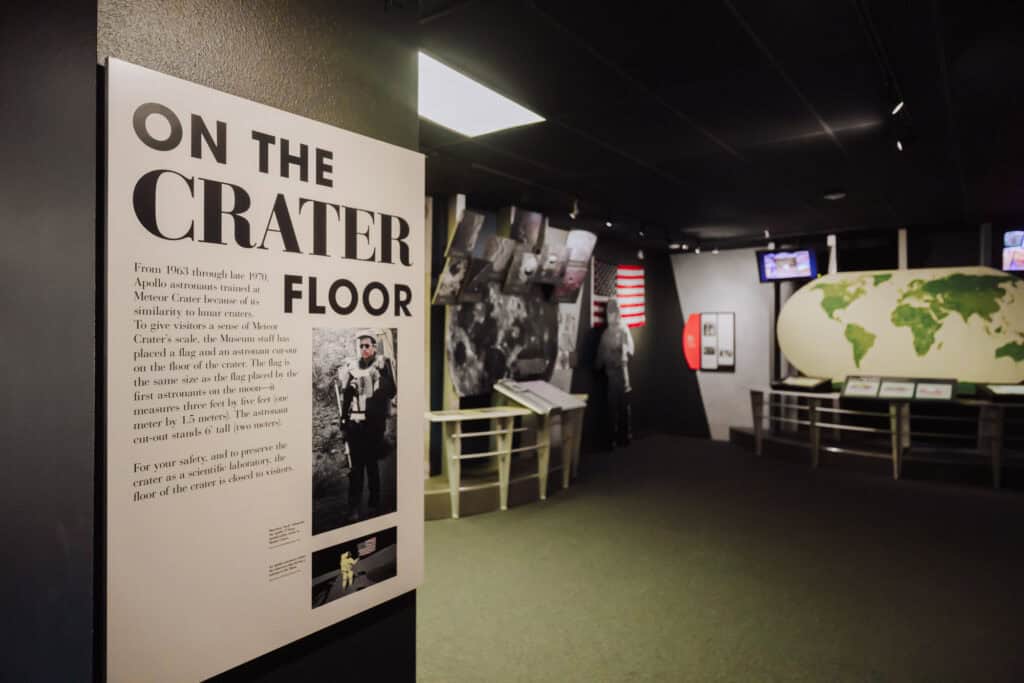
Modern Astronaut Training
While Meteor Crater was a prominent training site during the Apollo era, NASA has since shifted its focus to newer locations and methods. Modern training emphasizes Mars exploration, using sites that resemble Martian terrain. Volcanic areas in Northern Arizona and Utah are among the current training sites.
More Photos of Meteor Crater
Here are a few more pictures, which should help you know what to expect on a visit:
More FAQs about Meteor Crater
Let’s go over a few more questions people have asked about visiting.
Can you walk into the crater?
No, walking into the crater is not permitted to preserve the site and for safety reasons. Visitors can explore the rim via designated observation decks and guided tours.
Can I see the actual meteorite?
Fragments of the meteorite that created the crater are on display in the museum, along with information about its composition and impact.
Are guided tours available?
Yes, guided rim tours are available and included in the admission price. These tours offer insights into the crater’s history, geology, and impact science.
How long should I plan for a visit?
Most visitors spend 1.5 to 2 hours exploring the site, including the museum, observation decks, and optional guided tours.
Is the site family-friendly?
Yes, Meteor Crater is suitable for families. The museum has interactive exhibits, including a discovery center for kids, making it educational and fun for all ages.
What amenities are available at the site?
The visitor center includes:
- A museum with exhibits on the crater’s formation, space science, and meteorites.
- A gift shop with souvenirs and books.
- A Subway restaurant for food and drinks.
- Free parking and clean restroom facilities.
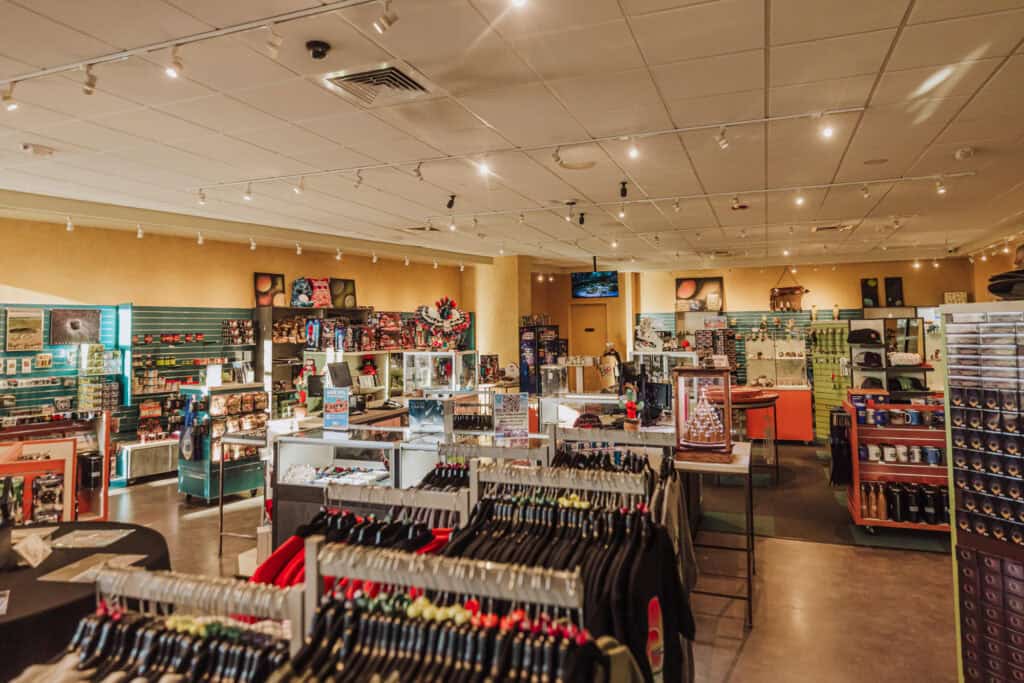
Is the site accessible for people with disabilities?
Yes, the visitor center and some observation areas are wheelchair accessible. Check with staff for assistance and accessible paths.
Can I bring pets?
Pets are allowed in outdoor areas but must remain on a leash. They are not permitted in the visitor center or museum (other than service animals).
Is there camping on-site?
No, but Meteor Crater RV Park is a few miles up the road. It’s affiliated with the actual property and offers discounts.
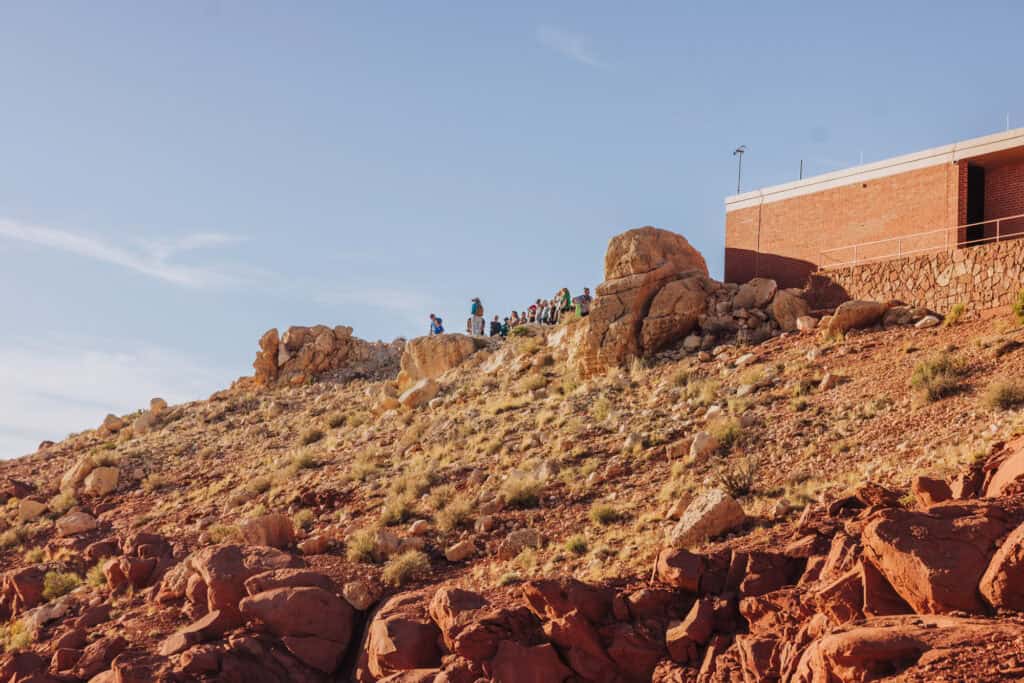
Other Sites to See Near Winslow, AZ
Winslow, Arizona, is a destination in itself. It pays homage to the glory days of historic Route 66.
Northern Arizona is also home to Petrified Forest National Park, which is one of three national parks in the state. The other two are the Grand Canyon and Saguaro National Park (near Tucson). Chiricahua National Monument, also in Southern Arizona, is likely to become a national park in the future (photo below).
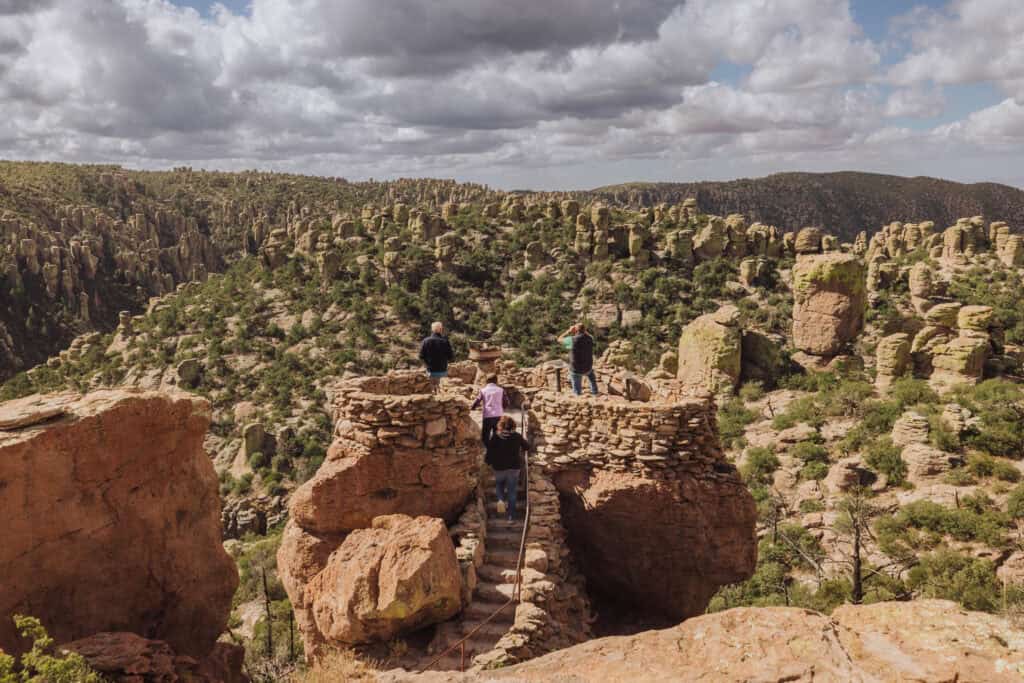
Down the I-40 from Meteor Crater, you’ll find Walnut Canyon National Monument on the way to Flagstaff. The city is home to a wide array of attractions from the famous Lowell Observatory to underground Lava Tubes (photo below) to Snowbowl Ski Resort.
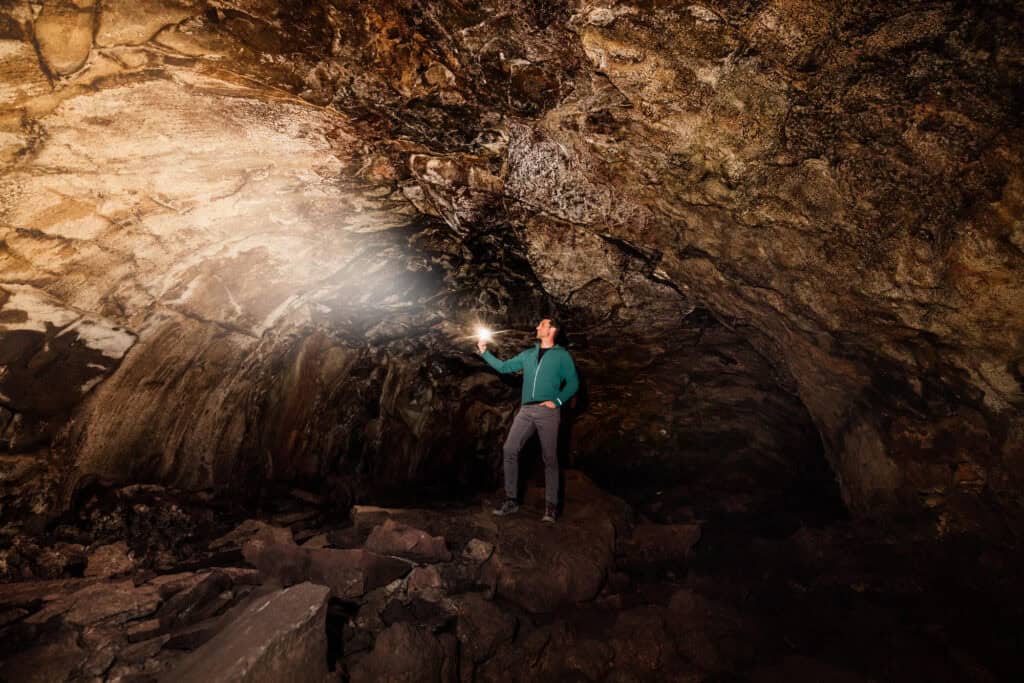
Hikers heading to Arizona can explore trails at Piestewa Peak and Camelback Mountain in Phoenix, Devil’s Bridge in Sedona, Picacho Peak near Tucson, the beautiful sites around Page, and the oasis at the bottom of the Grand Canyon: Havasupai Falls (photo below).
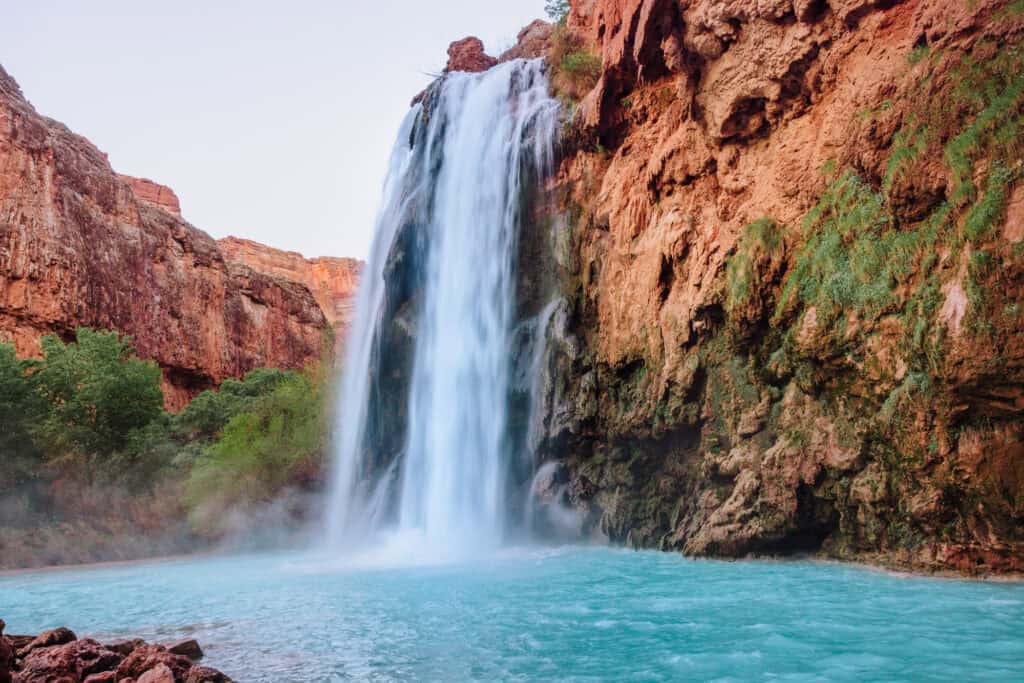
Arizona is also home to unique geological features, like the underground Kartchner Caverns, Fossil Springs (photo below), and the world’s largest travertine bridge: Tonto Natural Bridge.
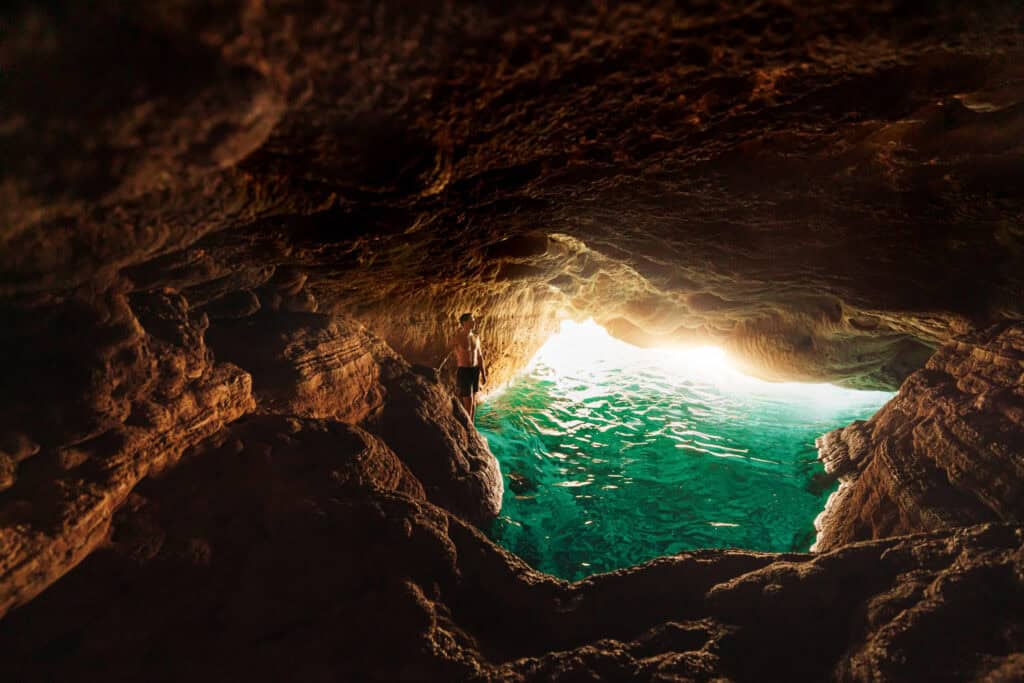
Visitors looking for more relaxed trips to Arizona might enjoy the wineries around Sonoita and Elgin, like Dos Cabezas and Los Milics.
If you’re looking for Wild West history, check out the mining town of Bisbee (photo below), which is near Lowell and Tombstone.
